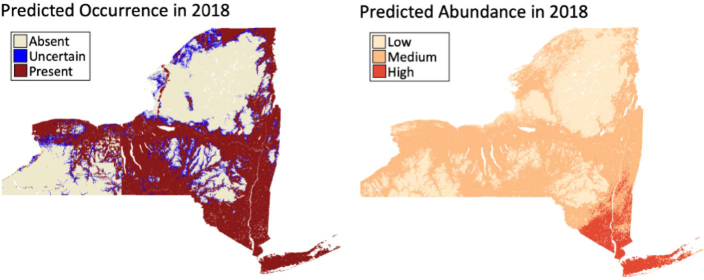Fig. 4.
Abundance and occurrence predictions for ticks across New York State, USA for 2018. The occurrence and abundance of nymphal ticks can be predicted to future years at very fine spatial scales (500 m). The shared environmental features among the models has caused some similarities in predictions such that most areas predicted to have low nymphal abundance are also predicted to have no detectable populations. However, some locations predicted to be devoid of nymphs are also predicted to have moderate nymphal densities as the abundance model utilizes a different set of environmental features and predicts abundances under the assumption that nymphs are present. The risk of encountering a questing Ixodes scapularis nymph at any location is the composite of these models. Any potential confusion from discrepancies between the models can be calculated as the product of the predictions from these models.

